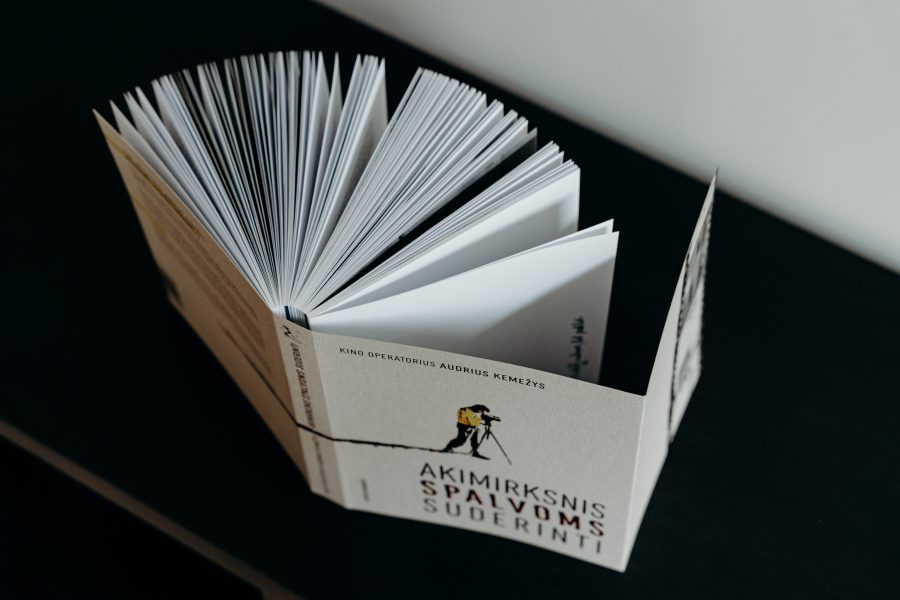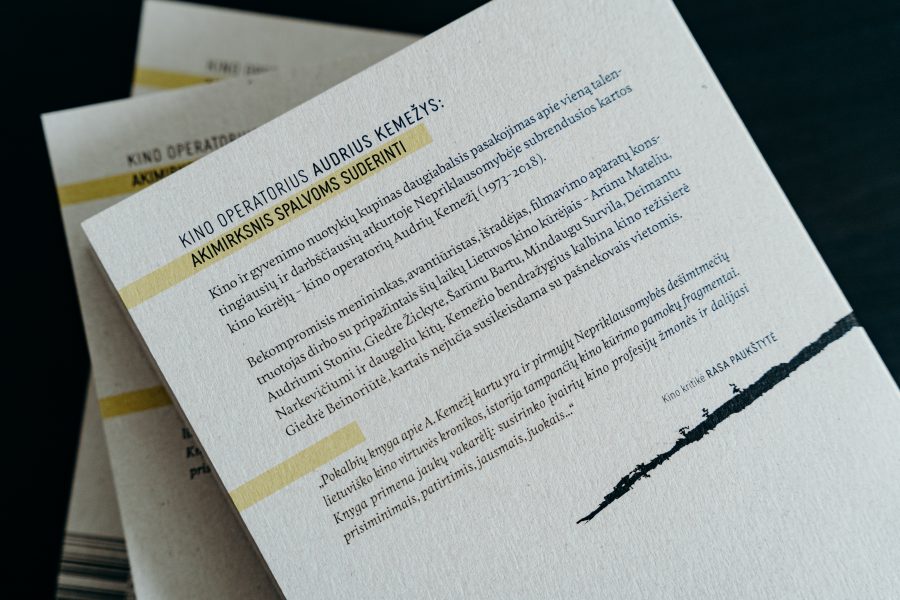"Cinematographer Audrius Kemežys: CORRECTING THE COLOUR IN THE BLINK OF AN EYE" is an interview-based biography of director of photography Audrius Kemežys (1973–2018), one of the most gifted and hard-working filmmakers of Lithuania's restored independence period. There are thirty interviews, in which contemporary Lithuanian filmmakers and people close to Kemežys discuss his many personae: uncompromising artist, adventurer, inventor, designer of filming equipment, etc. The interviewer is Kemežys' friend, film director Giedrė Beinoriūtė. The text is supplemented by photos, letters, film facsimiles, and quotes. As the book is about a cinematographer and the cinema, text and image enjoy equal status, like equal-rated solo instruments. Some photos extend the narrative, others introduce a new element. "The photos in the book [...] not only illustrate the stories but also set readers' imagination free, let them (re)create Audrius' portrait", says cinema critic Neringa Kažukauskaitė in her review of the book in the magazine ‘Kinas' (Cinema). The book design is in the form of a young cinematographer's sketchbook, creative diary, or draft script for a future film with the major ideas underlined, half-filled pages, and inspiring photos and post-its. This explains the choice of deliberately chaotic rough paper style – it enables texts of differing types (dialogues, film reviews, and quotes) to be set alongside images (artistic photographs, film shots, and everyday scenes). Some photographs take up the full spread, while others are small and presented as sequences of shots, reminiscent of a filmstrip. The quotes, underlined with a sky-blue marker pen, double as the chapter titles (e.g. ‘Cinematographer's job – to increase the tension'). Quotes from the artist himself are written against a yellow background of post-it notes, as important flashbacks. In keeping with the notebook design, the book has a cardboard cover. The spine and stitching are such that the book can be opened flat, so the reader can thumb through it comfortably and see the photos and pictures in full. The spine graphics complement the black and white graphics on the inside cover pages. The additional front cover flap consolidates the cover properly and accommodates a short cinema glossary.






